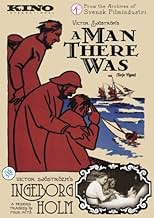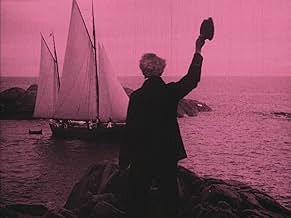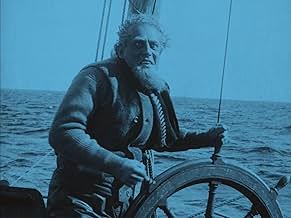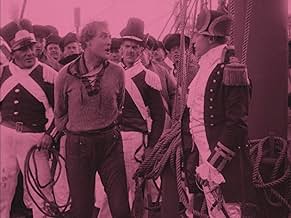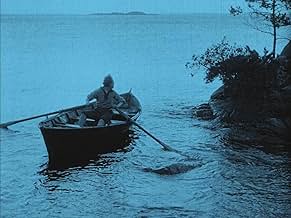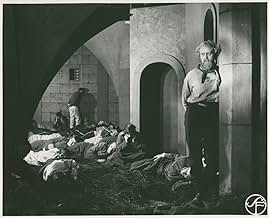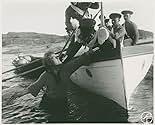Adicionar um enredo no seu idiomaTerje Vigen, a sailor, suffers the loss of his family through the cruelty of another man. Years later, when his enemy's family finds itself dependent on Terje's beneficence, Terje must decid... Ler tudoTerje Vigen, a sailor, suffers the loss of his family through the cruelty of another man. Years later, when his enemy's family finds itself dependent on Terje's beneficence, Terje must decide whether to avenge himself.Terje Vigen, a sailor, suffers the loss of his family through the cruelty of another man. Years later, when his enemy's family finds itself dependent on Terje's beneficence, Terje must decide whether to avenge himself.
- Direção
- Roteiristas
- Artistas
- En fiskare
- (não creditado)
- En kvinna i byn
- (não creditado)
- Den nya hustrun i Terjes stuga
- (não creditado)
- Norsk fånge i fängelset
- (não creditado)
- En av Terjes kamrater (1)
- (não creditado)
- En fiskare på stranden
- (não creditado)
- Engelsk officer i fängelset
- (não creditado)
- En av Terjes kamrater (2)
- (não creditado)
- Den nye mannen i Terjes stuga
- (não creditado)
- …
- Self
- (não creditado)
- En liten pojke
- (não creditado)
- Mor med son i knäet
- (não creditado)
- Vitskäggig gammal gubbe
- (não creditado)
- En kvinna på stranden
- (não creditado)
- Direção
- Roteiristas
- Elenco e equipe completos
- Produção, bilheteria e muito mais no IMDbPro
Avaliações em destaque
The story is told in approximately one hour. Modern filmmakers could learn much from the economy and concision of these early features. The narrative is straightforward, simple and unadorned, with no padding or extraneous subplots, and the story is told most effectively. It uses title cards sparingly, and in a very interesting fashion. Lines from the original poem are displayed on the screen, then the action described in the lines takes place, and the viewer is able to follow from there.
The actors do fine work in this film. Sjostrom proves to be a fine actor in the lead role, imbuing his character with dignity, sorrow, tenderness, anger, and many other emotions. The supporting cast is also effective, particularly Bergliot Husberg as Mrs. Vigen. The actors show restraint and naturalism in their parts, largely avoiding the tendency towards big melodramatic gestures that marked contemporary theatrical productions.
Equally notable is the cinematography, which depicts both the beauty and the dangerous ferocity of the sea, as well as the starkness of the island landscapes. Sjostrom made very effective use of the Norwegian scenery, causing nature to become a character in its own right in the film. Tinting adds to the moody atmosphere. The camera is mostly stationary, according to the custom of the time, but the shots are very well composed, like paintings. In addition, the film is well edited, not allowing shots to go on longer than necessary.
This film was definitely very moving and memorable. TERJE VIGEN is a compelling and concise tale of the effects of man's inhumanity to man, and of the dilemmas that individuals face when tempted to cast compassion aside. It is rendered effectively through succinct scripting, heartfelt and naturalistic acting, and artfully composed cinematography. It is definitely a masterpiece of silent cinema. SCORE: 10/10
The open-air filming is smooth and well-executed. The emotional rawness is hit hard but never gets overheated. The acting is intense but does not stray into laughable "stagger-and-clutch." Dutiful fidelity to Ibsen's poem may cramp the subtitles, but never interferes with masterful story-telling in the film itself.
There is one sequence, in which a launch from a British warship destroys a fisherman's rowboat and then attempts to hunt down the fisherman while he's swimming for his life underwater, that is an absolute classic that will live in your memory.
This film is short, but very powerful, and worth going the extra mile to see.
The story is simple and revolves around Terje Vigen, a sailor, who suffers the loss of his family through the cruelty of another man. Years later, when his enemy's family finds itself dependent on Terje's beneficence, Terje then must decide whether to avenge himself.
When comparing Terje Vigen to its peer films of the 1910's such as L'Inferno (1911), From the Manger to the Cross (1912), The Straw Man (1914), Birth of a Nation (1915) and even the masterful Intolerance (1916), what stands out in Sjöström's film making is it's emotional impact rather than its production design or acting prowess. It is a mature depiction of human pain, suffering and redemption, that far succeeds its historical immaturity. Also particularly noteworthy is Rodulf Sahlberg's amazing score for the film.
Ii highly recommended it for film buffs and those interested in cinema history. Victor Sjöström's protegé, Ingmar Bergman would continue the beginning of the Swedish film making legacy in becoming one of cinema history's most revered directors.
Você sabia?
- Erros de gravaçãoA title card references the year of the blockade as 1809. Great Britain and Sweden were allies in 1809, so there was no blockade. However, after she was forced to make peace with France after losing The Finnish War and the Pomeranian War, Sweden declared war against Great Britain. The Anglo-Swedish War (1810-1812) existed only on paper: British ships were still allowed to dock on the island of Hanö and trade with the Baltic states. Great Britain blockaded Sweden during World War I.
- Citações
[first lines]
Title Card: On a barren, remote islet, there lived an odd, grizzled man.
- ConexõesEdited into Spisok korabley (2008)
Principais escolhas
Detalhes
Bilheteria
- Orçamento
- SEK 60.000 (estimativa)
- Tempo de duração
- 1 h 5 min(65 min)
- Cor
- Mixagem de som
- Proporção
- 1.33 : 1

